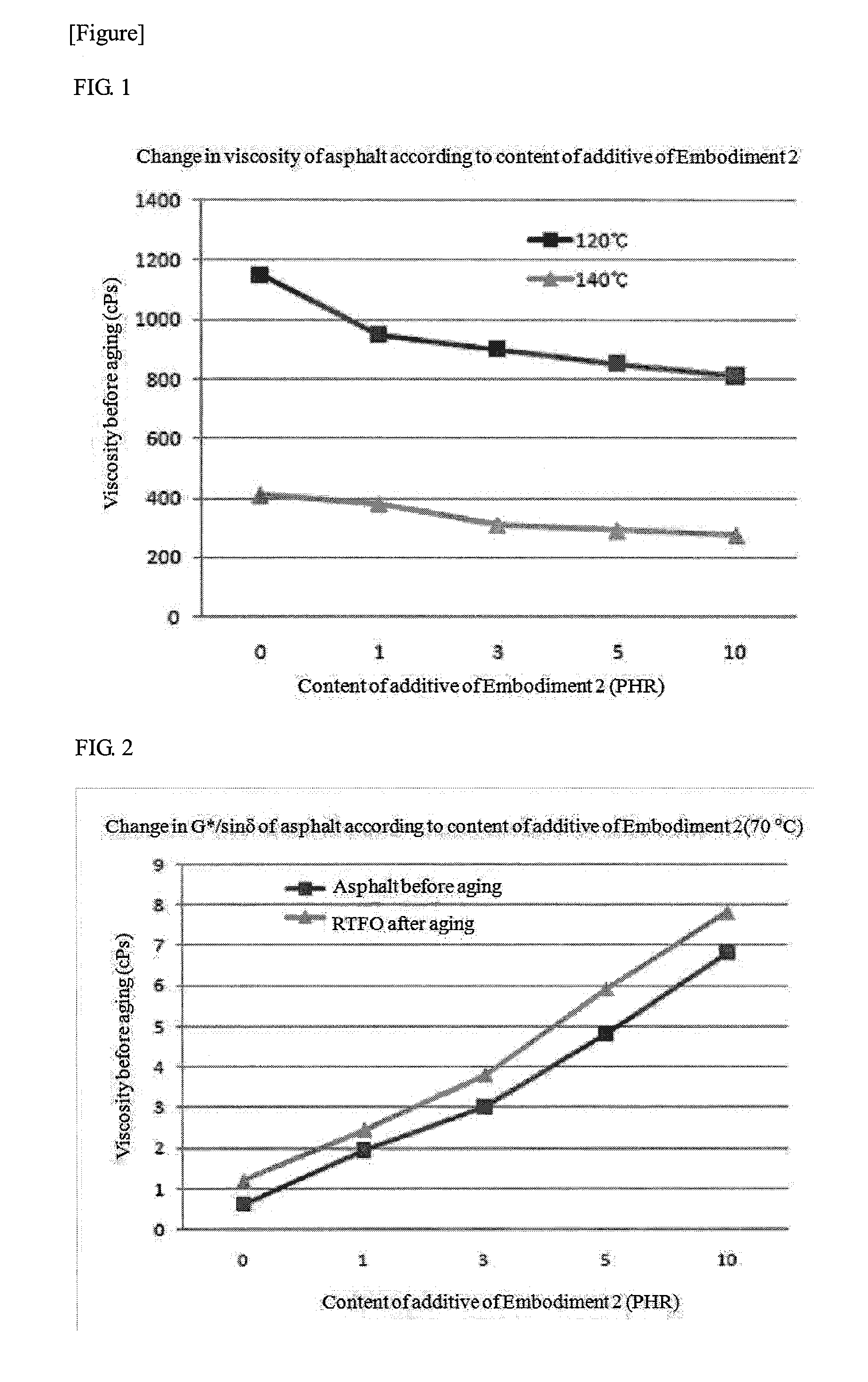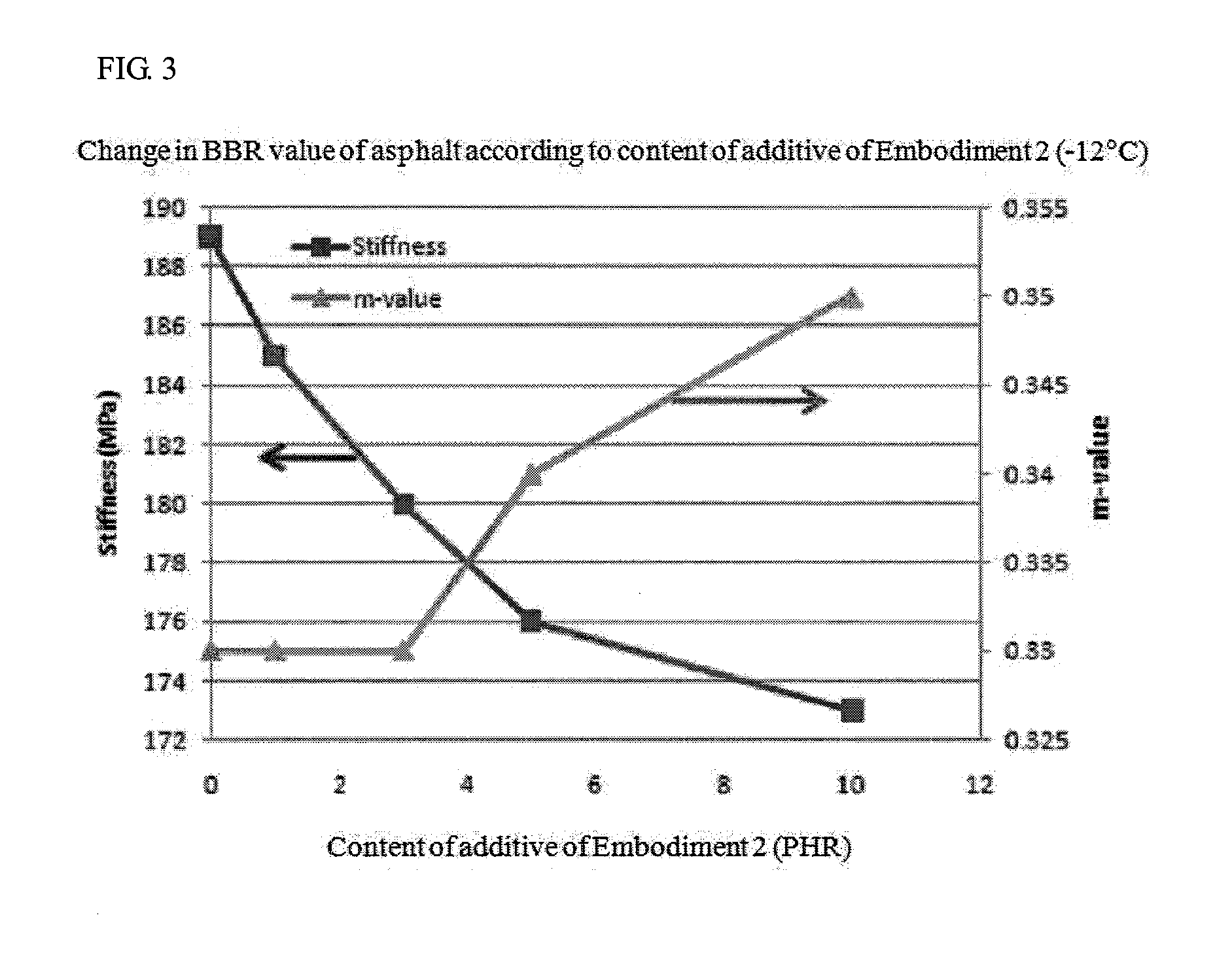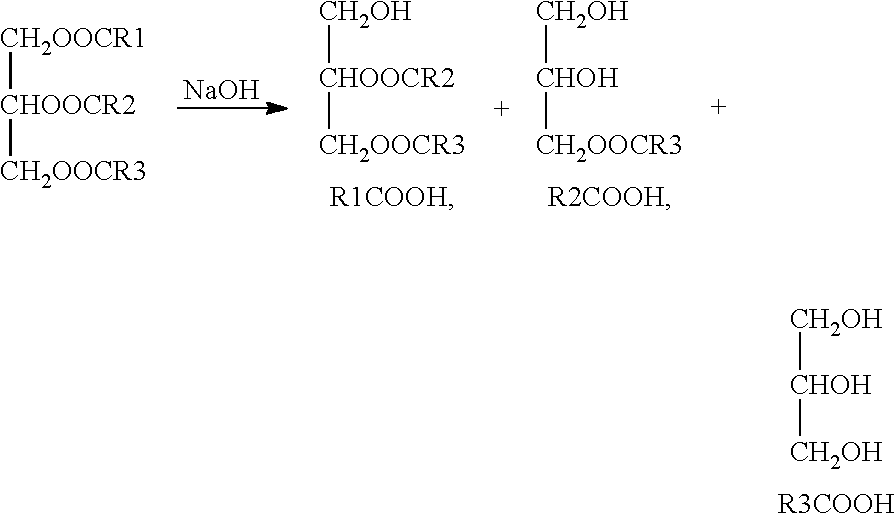Low carbon-dioxide additive compositions and warm-mix asphalt binder and mixture production method using the additive
a technology of additives and compositions, applied in coatings, climate change adaptation, etc., can solve the problems of increasing stiffness and reducing the rate of stiffness change, affecting the production efficiency of mixtures, and affecting the safety of workers, so as to achieve low carbon and high viscosity, the effect of producing within a short tim
- Summary
- Abstract
- Description
- Claims
- Application Information
AI Technical Summary
Benefits of technology
Problems solved by technology
Method used
Image
Examples
embodiments
(1) Materials
AP: Penetration 70 asphalt having PG 60-80,
PE-M: Polyethylene wax having a melting point of 114° C., a viscosity of 200 cps at 140° C., and a specific gravity of 0.93,
PE-H: Polyethylene wax having a melting point of 115° C., a viscosity of 800 cps at 140° C., and a specific gravity of 0.93,
Sasobit (trademark): Polyethylene wax extracted from Sasol having a melting point of 112° C. and a viscosity of 40 cps at 140° C.,
Palm: Palm wax extracted from coconuts, which has a melting point of 60° C. and a viscosity of 6 cps at 140° C.,
M-palm: Modified palm wax obtained by reaction of 80.8% palm wax, 3.1% sodium hydroxide, and 16.1% stearic acid, which has a melting point of 100° C. and a viscosity of 15 cps at 140° C., and
Oil: Paraffin oil having a kinematic viscosity of 100 cSt at 40° C.
(2) Production of Low Carbon Additive for WMA Mixture
The low carbon additive was produced by putting polyethylene wax, modified palm wax, palm wax, and oil into a 1 L reactor at an amount of ab...
embodiment 2
The physical properties of the asphalt were measured according to 0 to 10 parts by weight of the low carbon additive of Embodiment 2 on the basis of 100 parts by weight of the AP, and are shown in Table 4.
TABLE 4Asphalt before agingAsphalt afterContent of(Original)RFTOAsphalt after PAVlow carbonViscosityViscosityG* / sinδG* / sinδStiffnessm-valueadditive (phr)(120° C., cps)(140° C., cps)(70° C., kPa)(70° C., kPa)(−12° C., MPa)(−12° C.)011504120.6241.2011890.3319503801.9552.4501850.3339003103.0133.8051800.3358502904.8135.9121760.34108102756.8127.8131730.35RTFO (Rolling Thin Film Oven, thin film heating test): Simulation of aging of the asphalt mixture that is mixed with aggregate at a high temperature in a plant in the beginning, transported to an asphalt construction field, and spread in the process of producing the asphalt mixture.PAV (Pressure Aging Vessel, pressure aging test): Evaluation of aging of the asphalt mixture in a long-term period (In embodiments and comparative examples, ...
embodiment 7
In Embodiment 7 and Comparative Example 7 as shown in Table 5, their specimens had a difference of about 30° C. between production and compaction temperatures, and little difference between air voids. Thus, it could be seen that excellent in the compaction workability in the pavement field.
Next, specimens were made of the WMA mixture, and a tensile strength retained (TSR) test was conducted to review a difference in moisture sensitivity depending on a reduction in temperature in a resilient modulus test. The results are shown in Table 6 below.
TABLE 6ProductionCompactionResilientKinetictemperaturetemperaturemodulusstabilityTSR(° C.)(° C.)(20° C., Mpa)(times / mm)(%)Comparative1601501.0850062Example 7Embodiment 71301203.18248587
As can be seen from Table 6, Embodiment 7 of the present invention shows that the resilient modulus representing the durability at room temperature is increased about three times, that the kinetic stability representing the rutting resistance at high temperature ...
PUM
| Property | Measurement | Unit |
|---|---|---|
| melting point | aaaaa | aaaaa |
| melting point | aaaaa | aaaaa |
| melting point | aaaaa | aaaaa |
Abstract
Description
Claims
Application Information
 Login to View More
Login to View More - R&D
- Intellectual Property
- Life Sciences
- Materials
- Tech Scout
- Unparalleled Data Quality
- Higher Quality Content
- 60% Fewer Hallucinations
Browse by: Latest US Patents, China's latest patents, Technical Efficacy Thesaurus, Application Domain, Technology Topic, Popular Technical Reports.
© 2025 PatSnap. All rights reserved.Legal|Privacy policy|Modern Slavery Act Transparency Statement|Sitemap|About US| Contact US: help@patsnap.com



